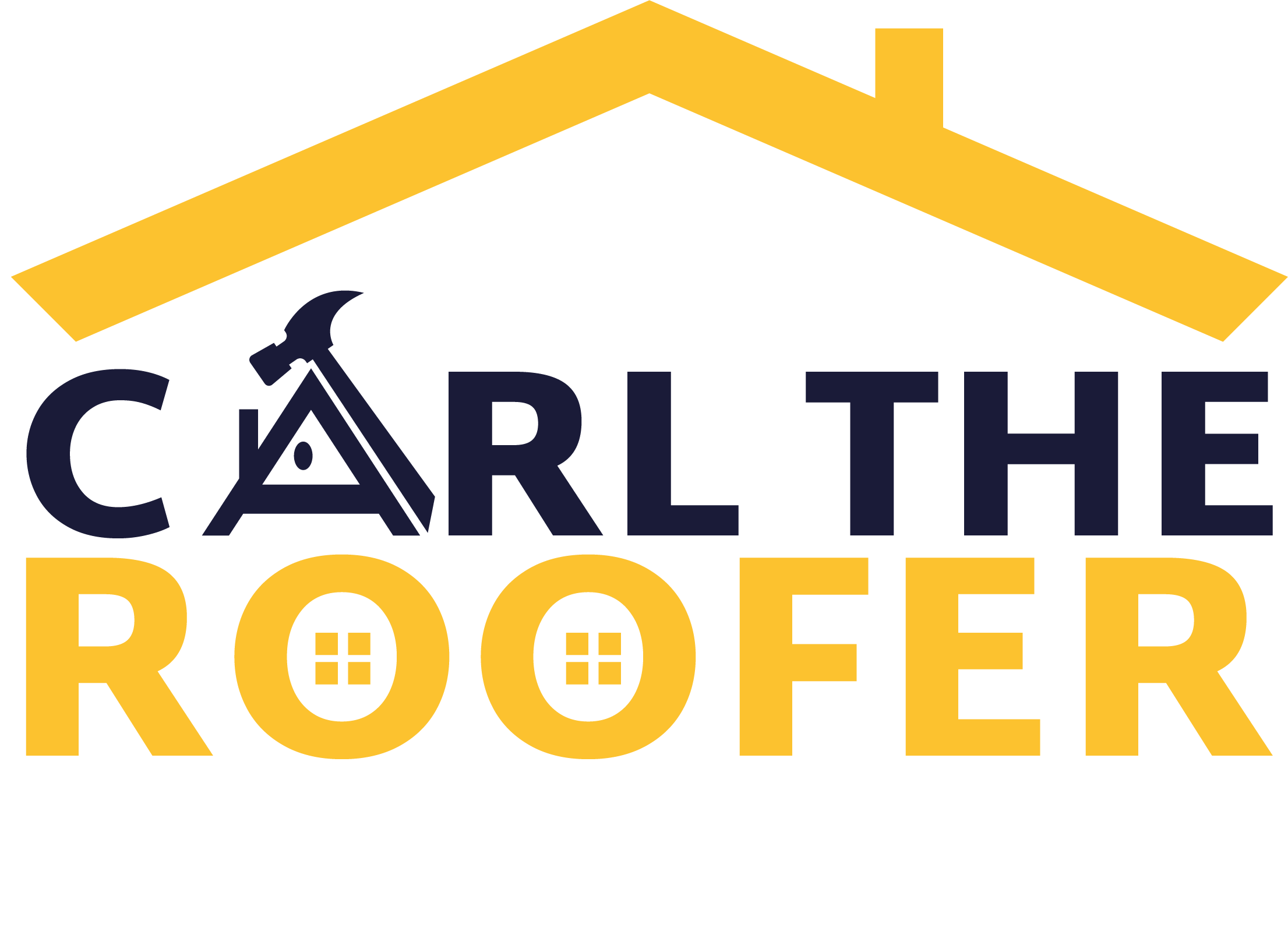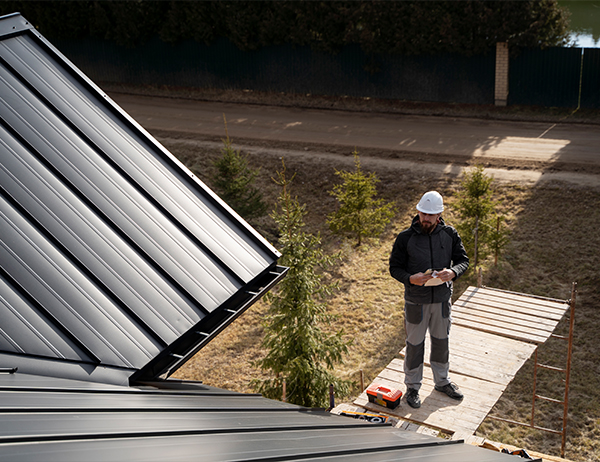Introduction
A sturdy roof is the backbone of a secure home. It protects us from the elements, ensures our comfort, and safeguards our belongings. However, like any part of a house, roofs require attention and care to remain in optimal condition. Recognising signs of roof damage early on can prevent costly repairs down the line. In this comprehensive checklist, we delve into the key indicators that your roof might need repair, helping you maintain a safe and sturdy haven for you and your loved ones.
Interior Signs
Your home’s interior can reveal subtle yet significant clues about your roof’s health. Those seemingly harmless ceiling stains might indicate more extensive problems. Water stains on your ceiling are often the first sign of a roof leak. These stains might appear as discoloured patches on your ceiling, and if ignored, they can lead to further damage. If you notice these stains, it’s essential to address them immediately to prevent further deterioration of your roof’s structure.
Dripping water is another alarming sign of an active leak. If water drips from your ceiling, it’s an urgent indication that your roof needs attention. Ignoring this sign could result in not only more extensive roof damage but also potential harm to your possessions and even your family’s health due to mould growth.
Mould and mildew growth within your home might also signal a roof issue. Excess moisture from a damaged roof creates the ideal environment for these unwelcome visitors. Watch for musty odours, discoloured patches, or allergic reactions among your family members, as these can all be indicators of mould growth due to roof leaks.
Exterior Signs
A quick look at your roof’s exterior can reveal critical information about its condition. Missing or damaged shingles are a clear sign that your roof is susceptible to further damage. Strong winds, heavy rain, and other elements can penetrate through these gaps, potentially leading to leaks and compromised structural integrity. If you notice any cracked, curled, or missing shingles, it’s time to schedule a roof inspection.
Bald spots on your shingles are another exterior sign of trouble. As shingles age, they tend to lose their protective granules, leaving them exposed to the harsh Australian weather. These granules act as a shield against UV rays and extreme temperatures, so when they’re absent, your shingles become more susceptible to deterioration.
Sagging roofs are not only unsightly but also a significant cause for concern. If you notice your roofline dipping or sagging, it could indicate structural issues such as weakened supports or water damage. A sagging roof not only compromises the overall appearance of your home but also poses safety risks to you and your family.
Attic Inspection
Your attic provides valuable insights into your roof’s condition that may go unnoticed from the outside. Daylight penetration, where you can see light seeping through the roof boards, is a sign of potential trouble. It indicates gaps or holes in your roofing, which may lead to leakages and further damage if left untreated.
Water stains and dampness in your attic are red flags for roof leaks. Even if you haven’t noticed interior leaks yet, these signs suggest that water is making its way into your home. Ignoring these indications can result in more extensive and costly repairs down the road. Mould growth in the attic is not only a sign of a roof problem but also a health concern. The muggy weather in Australia provides an ideal weather for mould to boom. If you see any mould growing on your roof, it’s crucial to treat the issue instantly. It is important for your family’s well-being as it stops its further growth.
Gutter Clues
Gutters play a crucial role in retaining your roof’s health by directing water away from your home. Granules in your gutters might indicate shingle deterioration. As shingles age, they tend to shed granules, and if you find an accumulation of these granules in your gutters, it’s a sign that your roof’s protective layer is wearing thin.
Gutter blockage is more than just an annoyance—it can lead to roof damage. Blocked gutters can be the reason for backup water, potentially seeping into your roof and causing leaks. Proper gutter maintenance is essential to ensure that water flows freely away from your roof and home.
Sagging gutters can also point to potential roof problems. If your gutters are pulling away from the roofline or appear uneven, it could indicate issues with the underlying structure or water damage. Addressing these issues immediately can help prevent further loss to your roof and home.
Chimney and Flashing
The components around your chimney can offer valuable insights into your roof’s condition. Damaged flashing, which seals the joint between your chimney and the roof, can lead to leaks. Flashing provides a waterproof barrier, so any compromise in its integrity can allow water to infiltrate your home.
The loose mortar around your chimney is another sign to watch out for. Mortar provides stability to your chimney, and if it’s deteriorating, it can compromise the chimney’s structural integrity. Addressing loose mortar promptly can prevent potential hazards and further damage.
A leaning chimney might not immediately seem like a roof issue, but it can indicate underlying problems. If your chimney is tilting, it could be due to shifting foundations caused by water damage or other structural issues related to your roof. Ignoring a leaning chimney could lead to more extensive roof repairs in the future.
Energy Efficiency Changes
Your roof’s condition can affect your home’s energy efficiency. Increased energy bills might be a result of a compromised roof. Damaged roofing materials can lead to poor insulation that leads cooling and heating systems to work harder to maintain a comfortable temperature indoors.
Temperature fluctuations within your home can also be attributed to roof problems. Drafts and uneven heating or cooling might suggest that the roof is no longer providing satisfactory insulation. Addressing these issues can not only improve your comfort but also reduce your energy bills in the long run.
Age of the Roof
The age of your roof plays a noteworthy role in its overall condition. Different roofing materials have varying lifespans, and the age of your roof can help you identify potential problems. As roofs age, they become more susceptible to wear and tear, making regular inspections even more crucial.
Regular inspections are essential for older roofs. The Australian climate, with its intense sun, heavy rains, and strong winds, can take a toll on roofing materials over time. Scheduled inspections by professionals can help identify and address issues before they escalate into costly repairs.
Conclusion
The home roof is the protector of your home against various elements. For your comfort and safety, prioritize scrutiny of your home roof. By following the checklist mentioned above, you can take pre-emptive measures to cater for these issues before getting them worse. Prevention and early detection of these problems are key to maintaining a strong and secure roof. Never hesitate to seek roofing professional help if you detect any of the signs from the checklist stated above. Doing this will ensure the longevity and litheness of your roof.
Call to Action
If you have any experience with roof repairs or have any tips regarding roof repairs, share them in the comments section. If you notice any signs of the checklist mentioned above, reach out to Carl, the Roofer, for professional help in Australia.
Frequently Asked Questions (FAQs)
Q1: How often should I inspect my roof?
A: It is suggested to have a roof inspection at least one time in a year. Prefer inspection before and after the unwanted weather conditions. Still, if you detect any sign of damage or swift change, immediately schedule an inspection.
Q2: Can I perform a roof inspection myself, or should I hire a professional?
A: While a visual inspection from the ground can help you identify some issues, it’s best to hire an expert roofing contractor for a thorough assessment. Professionals have the experience to spot hidden problems and ensure a comprehensive evaluation of your roof’s condition.
Q3: How can I prolong the lifespan of my roof?
A: Regular maintenance and prompt repairs are key to prolonging your roof’s lifespan. Keep your gutters clean, trim overhanging branches, and ensure proper attic ventilation to prevent excess moisture. Additionally, scheduling professional inspections can catch minor issues before they escalate.
Q4: What should I do if I discover a roof leak?
A: If you notice a roof leak, your first step should be to contain the damage. Place buckets or containers to catch dripping water and cover valuable belongings. Contact roofing experts to identify the damage extent and necessary repairs.
Q5: How can I select a good roofing material for my Australian home?
A: The selection of a good roofing material relies on various factors such as budget, weather, and style of your house. In Australia, popular options include Colourbond steel, concrete tiles, and terracotta tiles. Consider consulting with a local roofing expert who can suggest the quality material for your specific needs and the local climate. Remember, your roof’s health is crucial for your home’s overall integrity. Consistent inspections, expert guidance and timely repairs benefit you in providing protection and comfort for a long time. Feel free to reach out to Carl, the Roofer, for expert advice and assistance.

